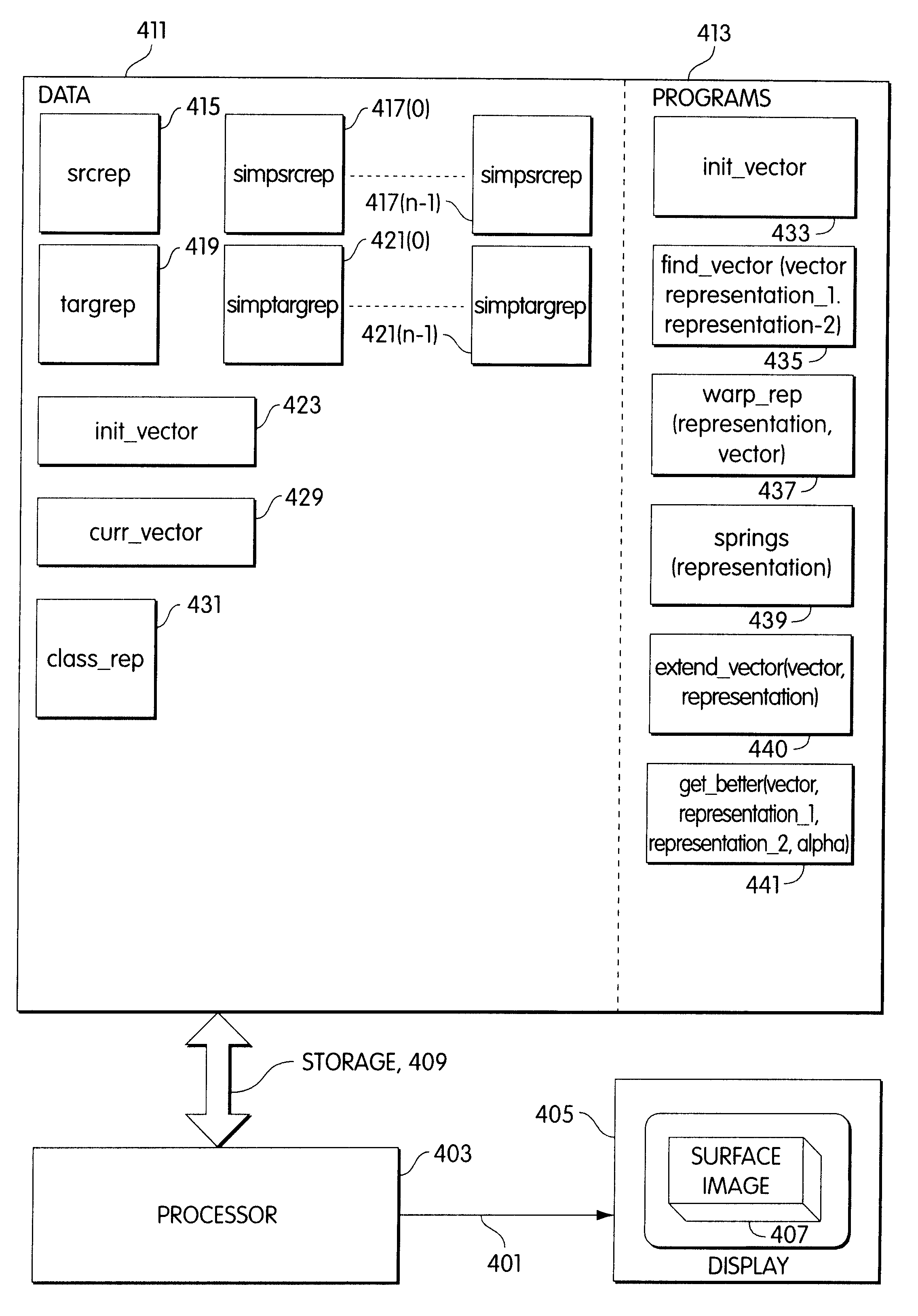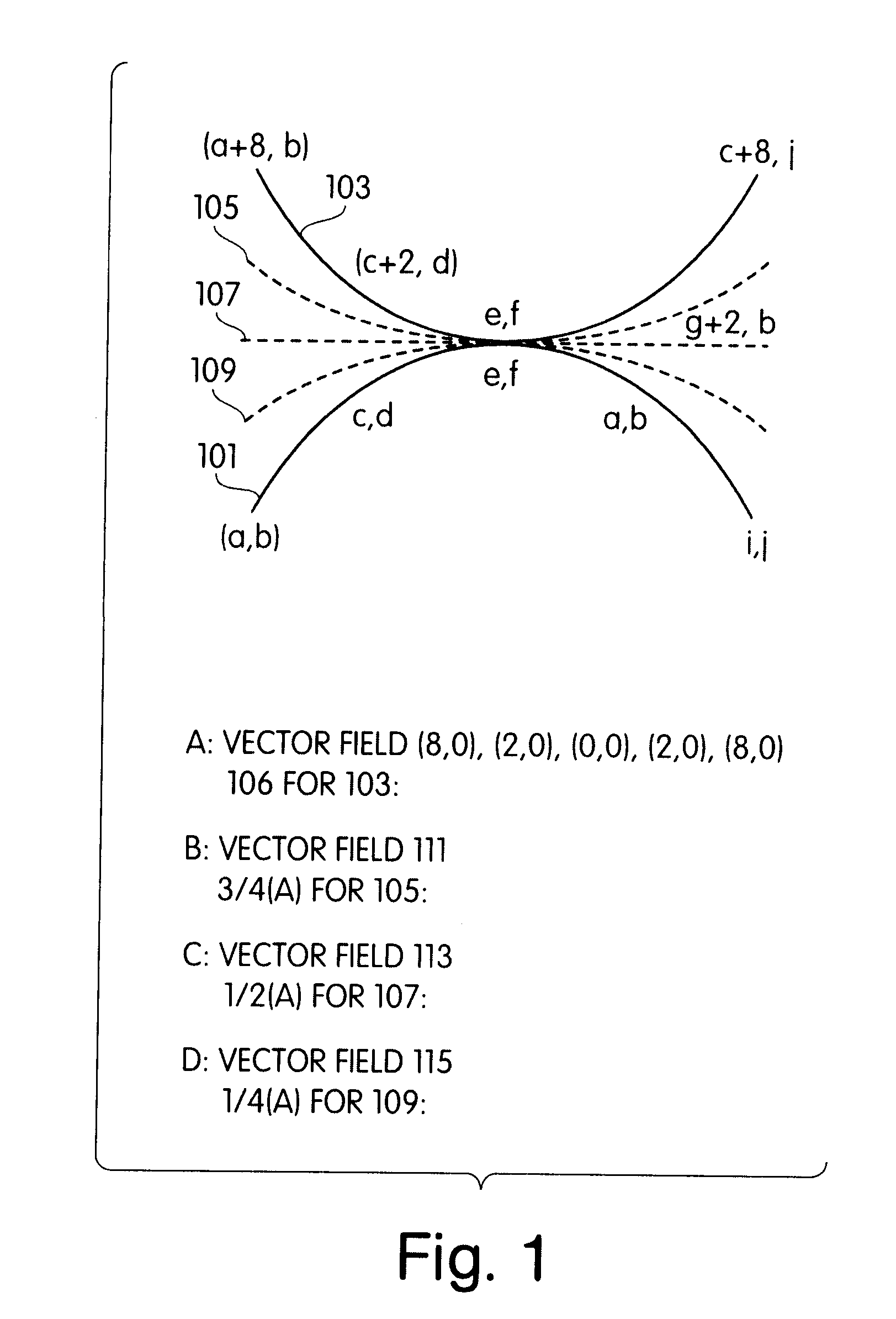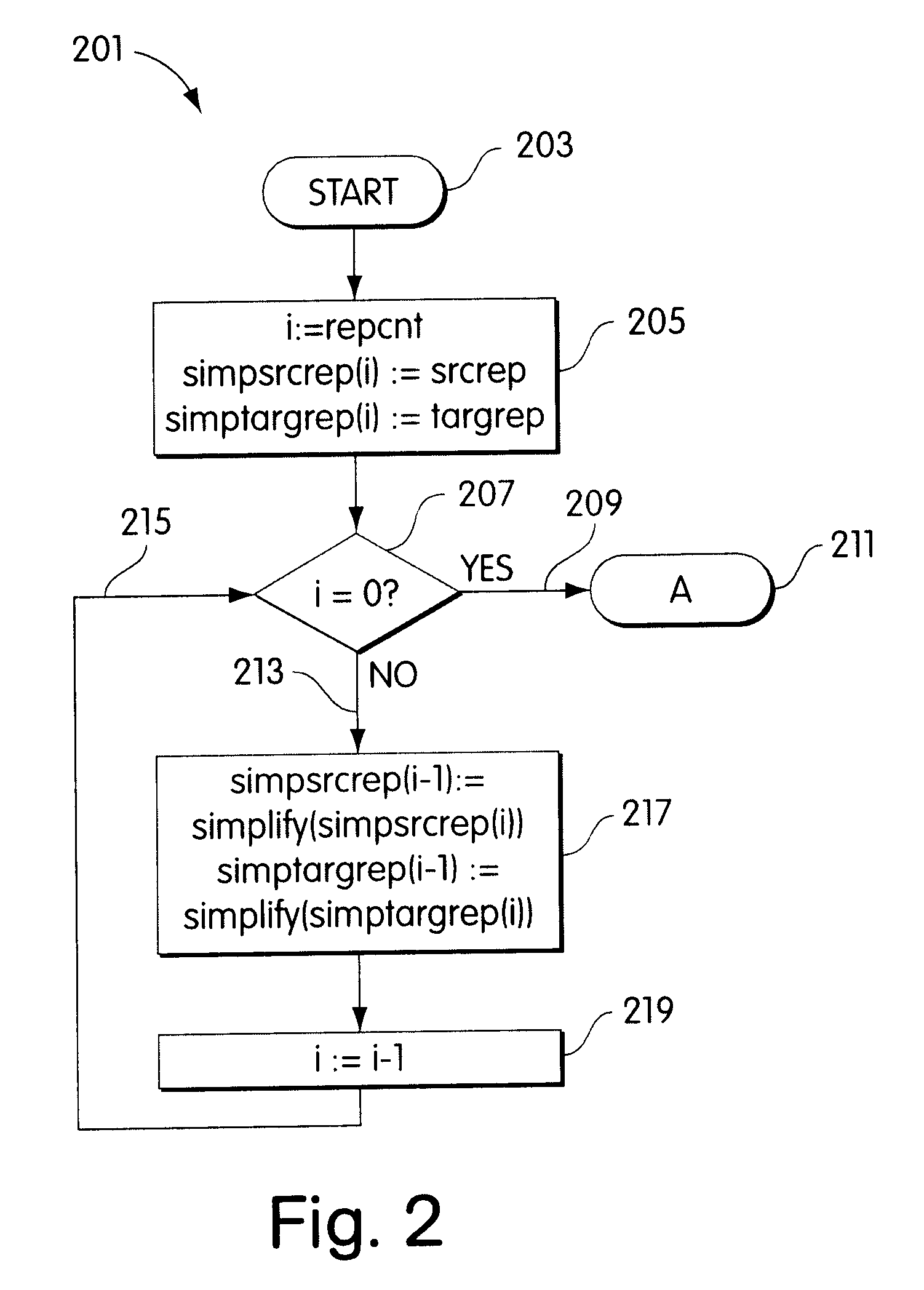Correspondence between n-dimensional surface: vector fields that are defined by surfaces and that generate surfaces which preserve characteristics of the defining surfaces
a technology of n-dimensional surfaces and correspondence, applied in the field of surface generation, can solve the problems of computational cost and the inability to find the vector field of such a determination
- Summary
- Abstract
- Description
- Claims
- Application Information
AI Technical Summary
Problems solved by technology
Method used
Image
Examples
Embodiment Construction
of the Method: FIG. 5
FIG. 5 shows how the method can be used to produce a vector field which, when applied to a representation of the shape of a giraffe, warps the representation to produce a shape close to that of a camel. FIG. 5 is an array of images produced from representations of shapes. The images in each column of the array are made from representations of shapes that have been simplified to the same degree, with the images in column a not having any simplification at all and the images in column g having the most simplification. The images in row 501 are made from the source representation, simplified as required by the column; the images in row 507 are made from the target representation, again simplified as required by the column. Rows 501 and 507 thus show the results of the operation of simplifier 201. As can be seen from the figures, the surfaces are represented by means of networks which divide the surfaces into triangular planes; on each simplification, the number of ...
PUM
 Login to View More
Login to View More Abstract
Description
Claims
Application Information
 Login to View More
Login to View More - R&D
- Intellectual Property
- Life Sciences
- Materials
- Tech Scout
- Unparalleled Data Quality
- Higher Quality Content
- 60% Fewer Hallucinations
Browse by: Latest US Patents, China's latest patents, Technical Efficacy Thesaurus, Application Domain, Technology Topic, Popular Technical Reports.
© 2025 PatSnap. All rights reserved.Legal|Privacy policy|Modern Slavery Act Transparency Statement|Sitemap|About US| Contact US: help@patsnap.com



